“Music photography is a visual document of an artist’s legacy”: A Conversation With Niña Sandejas
The veteran music photographer shares her experiences shooting rock shows and FlipTop battles, and imparts wisdom to aspiring shutterbugs.

Self-portrait by Niña Sandejas
Self-portrait by Niña Sandejas
Niña Sandejas may come across as modest and unassuming, but in the realm of concert photography, she is a giant in terms of experience and achievement. She has undoubtedly influenced subsequent generations of music photographers, like Karen De La Fuente and Billboard Philippines’ Mayks Go, having taught them directly through face-to-face workshops and online Reddit AMAs, or indirectly through her published work.
For many local musicians, having a photo taken by her felt like an honor, and would more than likely become their profile pictures on their social media accounts, as it would perfectly capture their emotions, their intensity while performing, a specific feeling, a moment. More often than not, they’re photos you can almost hear.
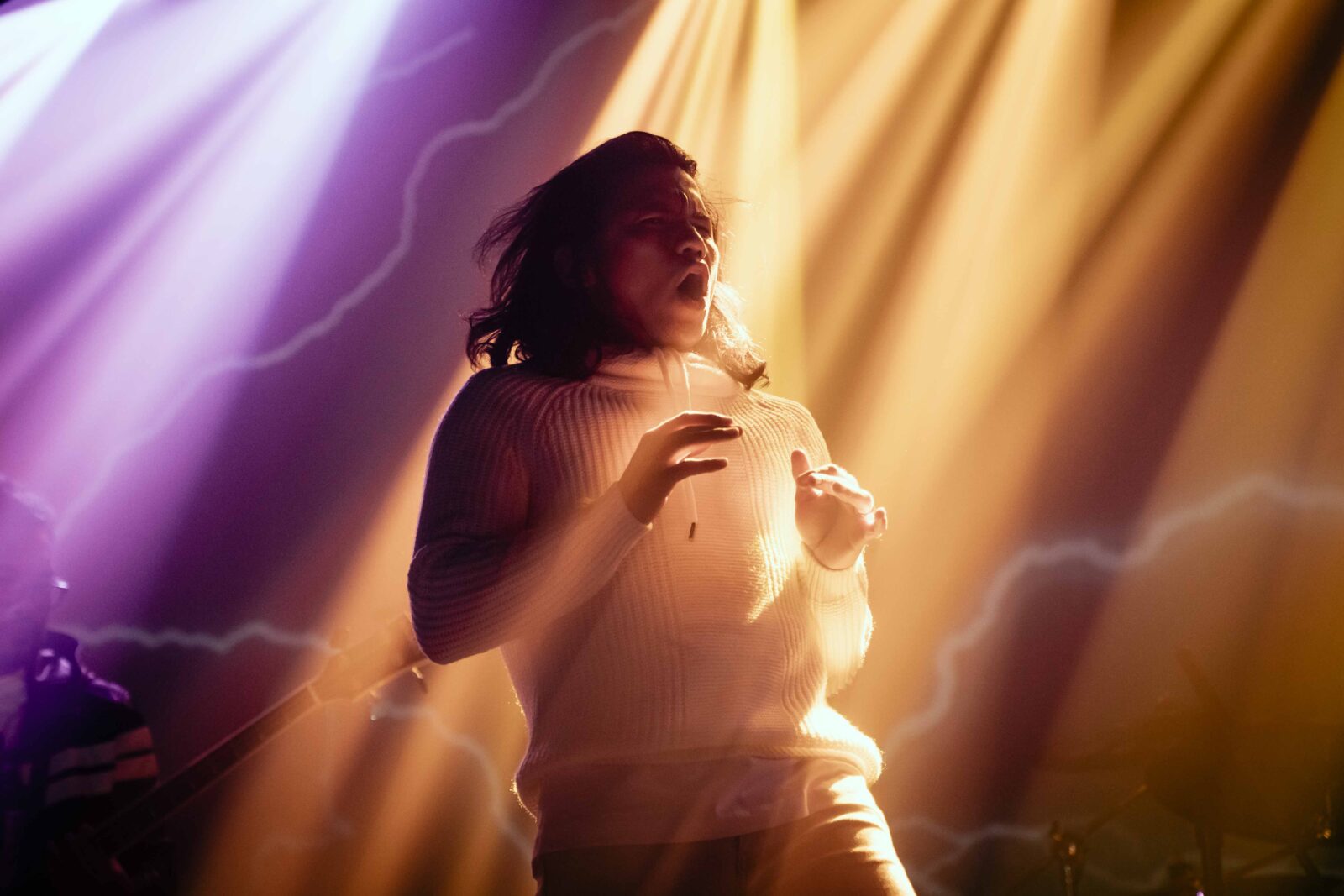
Yael Yuzon of Sponge Cola photographed by Niña Sandejas
In 2016, Sandejas became the official photographer of FlipTop, the long-standing and highly esteemed rap battle league that has spawned countless local hip-hop superstars and underground icons. As we learn from her, the experience has not been that much different from shooting rock and metal shows, and she has applied the same philosophy and preparation for it, while gaining new wisdom in the process.
With 20 years in the industry, Sandejas is a highly regarded practitioner and mentor in music photography, and anyone interested in documenting the Filipino music scene as a hobby or as a career should check out her work. As she tells Billboard Philippines, there have been many lessons throughout her career that can be applied not only to photography, but also to life in general.
Billboard Philippines: For the benefit of our younger readers, when and how did you get started in music photography?
Sandejas: I was Rivermaya’s stylist back in 2004 and used a 35mm film camera to document random images and textures for designs. I used to help Kitchie Nadal purchase clothes when she was in Mojofly, and I ended up photographing her in one of her first shows as a solo artist. Rico Blanco saw these images and asked me to practice taking photos of Rivermaya, explaining that there weren’t a lot of photographers who did that during the time.

Kitchie Nadal photographed by Niña Sandejas, in 2004
I loved the idea, so eventually I quit working in the fashion industry to focus on documenting bands, and realized it was more fun to just shoot than to buy or make clothes for them (laughs). It was only in 2007 when I landed my first international gig photographing Muse in Hong Kong that I decided that I would take this more seriously.
Over the years, who have become your favorite acts to capture, whether live or in the studio, and why?
This changes every single time, but the most recent ones always come back to the top of the list. One of them is Greyhoundz. I was able to catch them again for their vinyl album launch and I realized how much their music just pulls you in, and the energies from both the crowd and the band create this vortex of aggression and release in the pit, which is the same as when I religiously followed them years ago.
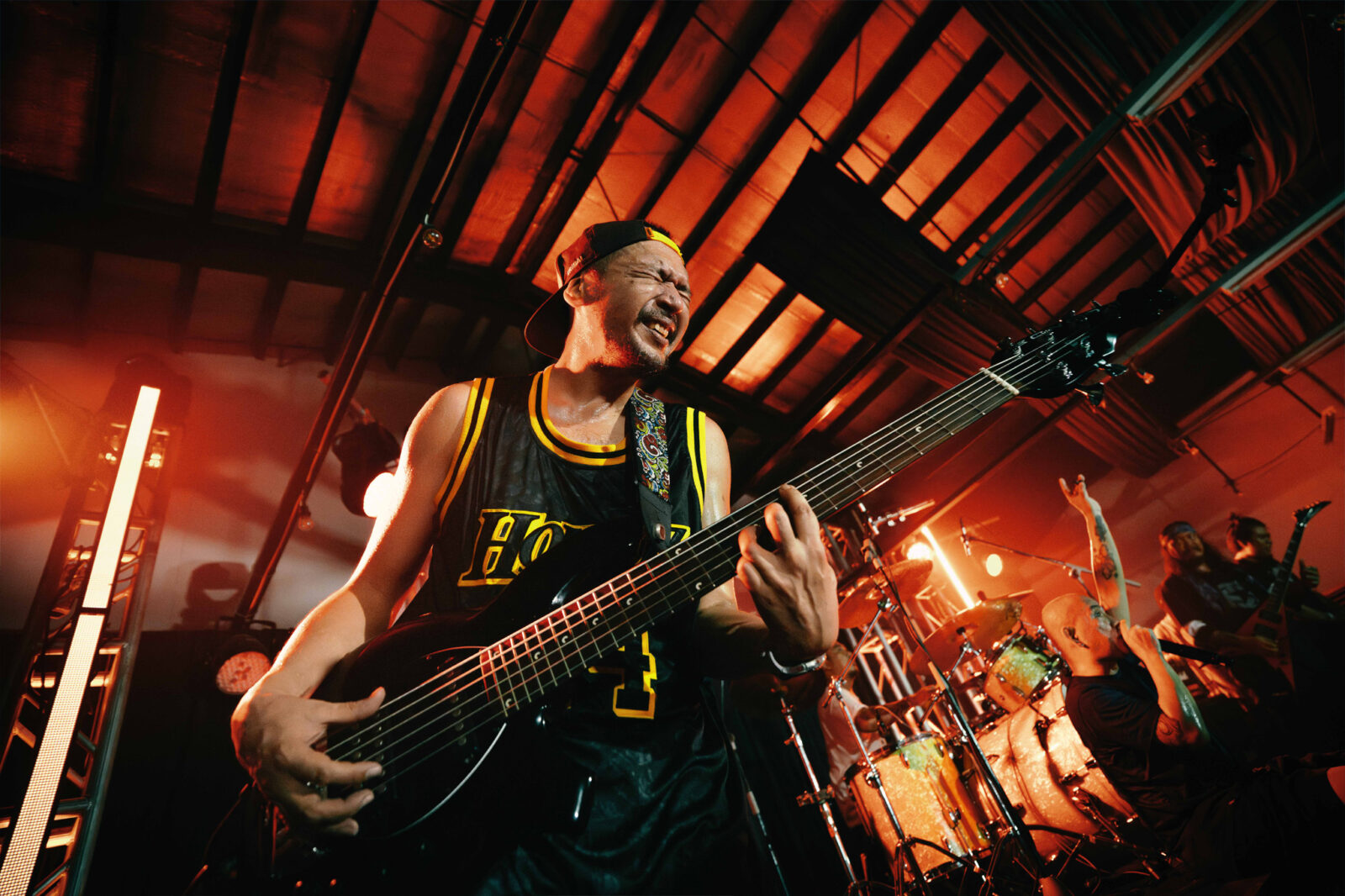
Niño Avenido of Greyhoundz photographed by Niña Sandejas
Also recently I was able to photograph Emar Industriya from [the] indie hip-hop label Uprising when he performed at the FlipTop Rapollo x Mindfields in Cebu. He has a flair about him that comes across as striking in images, and it cuts across with his style of rap.

Emar Industriya photographed by Niña Sandejas
You’ve also become the official photographer for FlipTop. How did you get that gig, and how similar or different is it from taking photos of rock or alternative artists?
I was asked to shoot a profile of FlipTop founder Anygma back in 2014, which included photos of him during the battles. He probably knew my work beforehand, because after the event he asked if I was willing to photograph the scene further, which didn’t happen right away because I was in the thick of the rock scene at the time. I always think about the artist or scene before committing to them, because I typically prefer to invest months or years instead of one-off projects — not necessarily shooting consecutive weekends, but just knowing that I can go back to them when we both feel we need to [or] if it’s something that can be considered historical. I need to know if they’re willing to work with me in the long run, if the story needs it.
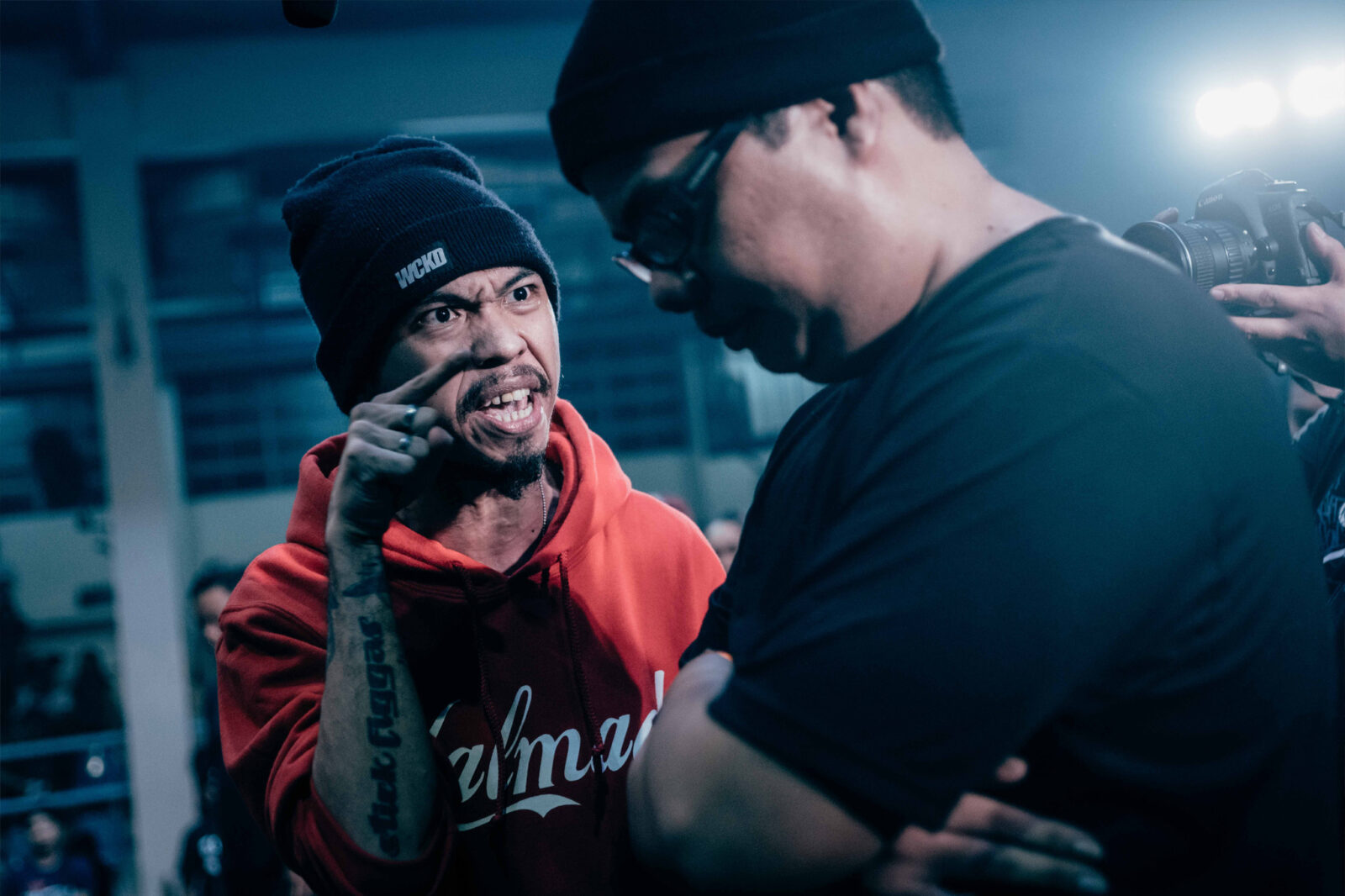
FlipTop Ahon 7 photographed by Niña Sandejas
In a way, that first battle was a trial for me to see if I could fit into the whole program FlipTop had already set for years. It was in 2016 when I decided to work with them full-time. I needed more time to be ready. The battles can be intense; it takes a certain amount of experience with emotions to be composed while you’re seeing and hearing what’s happening in front of you, to know that the battles are not just about rhythm and wordplay, but [also] for credibility. They’ve all got something to say and they say it well. It’s not just about winning but earning respect, and showing grace while their reputation is being demolished while millions of people are watching. Finding a way to rebut these statements hurled at them is the only way to save themselves, that is if they still have another round. It would be a disservice to the scene if I didn’t understand this. FlipTop is a lifeline for many hip-hop artists who want to make it big.
Both the rock/metal and hip-hop scenes can be intense. They equally bring their own unique impact to the industry. With rock you rely more on the music to give you emotional cues; in rap battles, you rely on the emcees’ emotions to know when to click the shutter.
What are some of your more memorable experiences while shooting FlipTop events?
It’s my experiences with the people behind the scenes more than the battles. When you document a group or a scene, you’re practically joining a foster family, and if your personalities work together, it’s so much easier and fun to shoot. It makes me want to create better images because the hard work needs to be seen. When everyone’s so happy and celebratory when it’s a successful show, or if there are events that fall short of expectations, you try to think of ways you can help make it better [next time]. I’m encouraged to do more because of how many people have helped and believe in it that you just want something good to last, at least for as long as I can stay in it. Just like all the other artists and scenes I’ve worked in and said farewell to, I know it has to end at some point, so [I] just have to make the most out of it.
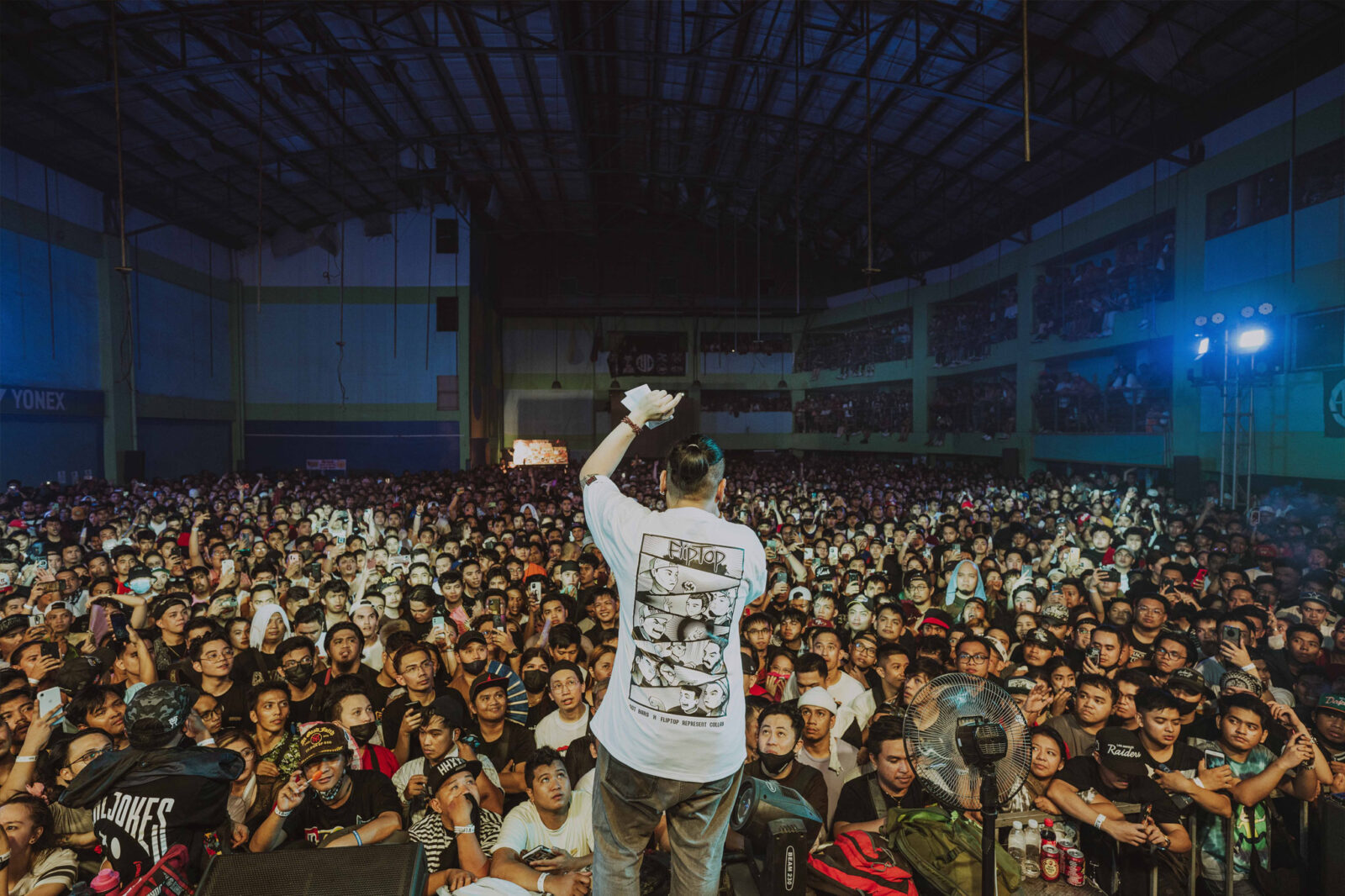
FlipTop Ahon 13 photographed by Niña Sandejas
But battle-wise, FlipTop Ahon 13 was the most memorable, given that it was the finals and the largest show every year, and it happened in 2022 when we were all just coming out of the pandemic. It had so many technical problems: we lost power, it was overcrowded, [and] I was nursing a back injury. People were really clamoring to see a live battle after years of being unable to. But we managed. Anygma commands so much respect from the crowd, and his sincerity in admitting mistakes easily earned him sympathy. The shared struggle with the crew made us all want to do better for everyone, especially the fans.
Besides the technical how-tos of using a camera, proper angles and lighting, and correct post-processing, what other skills should music photographers learn to cultivate?
Endurance. Music photography is a visual document of an artist’s legacy, and you don’t get that with just one photo. I’ve been running this marathon for 20 years and have learned to pace myself, stop when I need to, and it doesn’t depreciate my value as an artist. Many artists today find that social media is a barometer, but that’s fleeting and addicting, and it traps you into this vicious cycle. I know because I’ve been there, always worried about trying not to get left behind or forgotten. With so many images being put out there, constantly posting for a semblance of relevance can sometimes be counterproductive. I’d rather use that time to focus, to remind me what I’m really supposed to do.
You’ve also mentored younger talents like Karen De La Fuente and Iya Forbes, just to name a few, and they’re doing quite well. What do you feel about their success, and which key lessons of yours are they applying the most in their work?
I think it was less about the technical lessons, but more about letting them find their own voice while guiding them through the difficult realities of the industry. We’re still very much in touch — in fact the three of us are neighbors (laughs).
I think I really helped them to be who I wanted them to be when they’re the ones giving me advice now. When I was able to take photos of the Foo Fighters with Dave Grohl in his ‘Dave of Thrones’ era when he broke his leg, I messaged them and said I could retire, and Iya was adamant [that I shouldn’t]. She reminded me about this years later when I was able to attend the Red Bull Photography Academy in South Africa in 2019 — an extremely secret dream of mine because their alumni are the best action and sports photographers in the world. She told me that she really didn’t believe that that was it for me, and knew there was going to be more to my career.
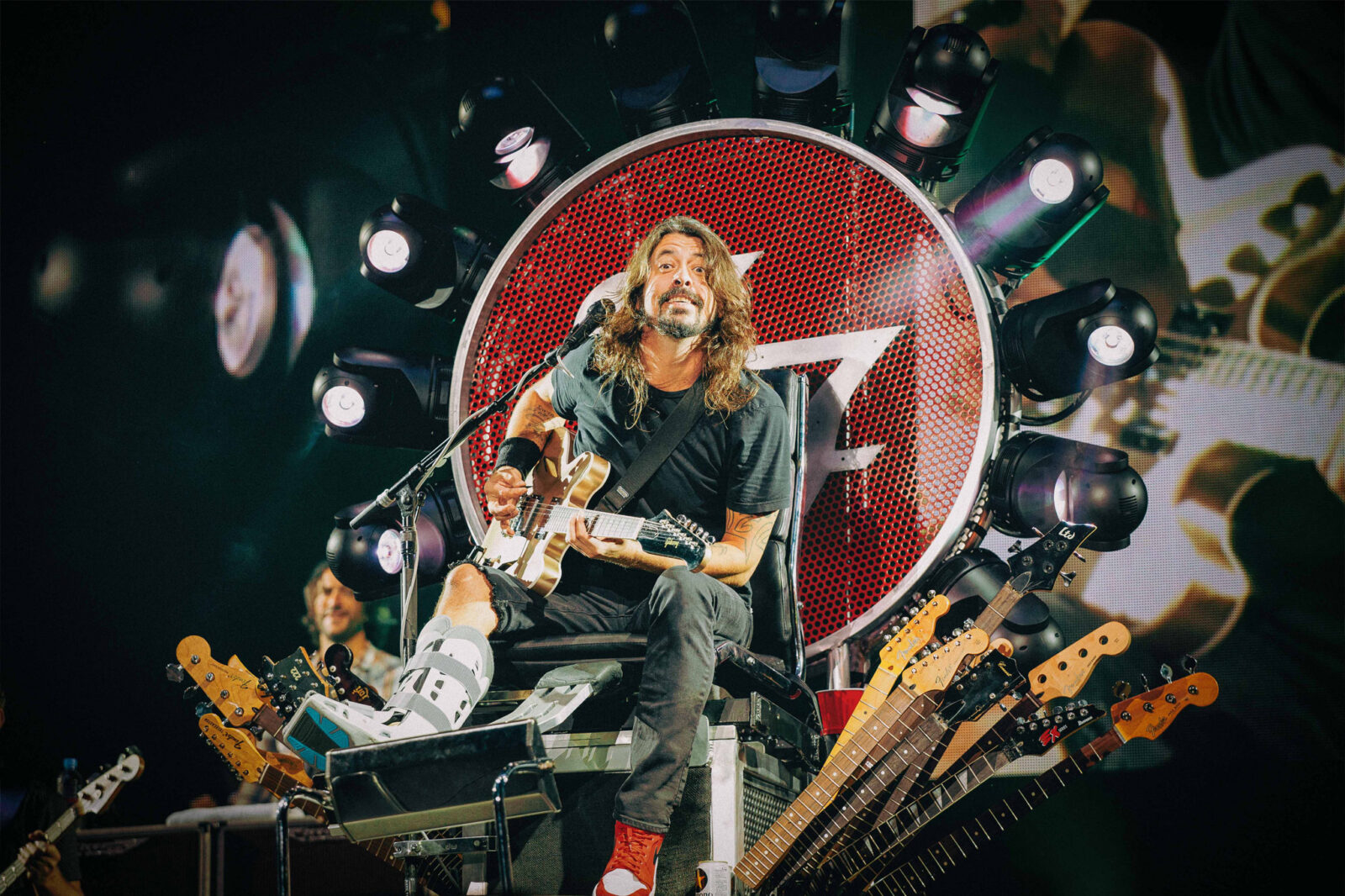
Dave Grohl of Foo Fighters photographed by Niña Sandejas
A lot of my students were reminding me of the same thing when I was able to photograph Rivermaya’s recent reunion. When the photos came out, they all said that they were praying and hoping that I would get it, because they knew that was the band I started with.
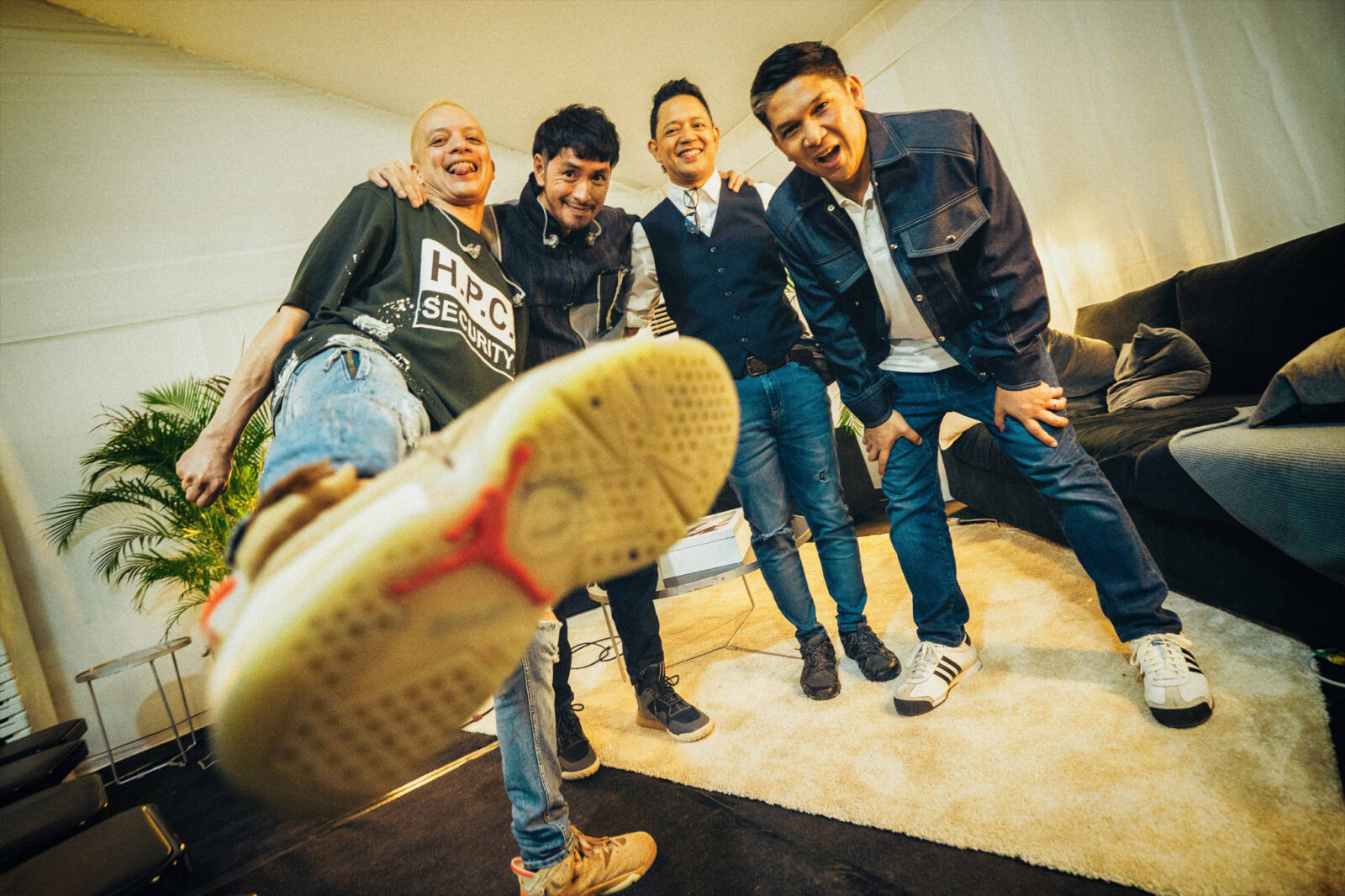
Rivermaya photographed by Niña Sandejas
They also have bands that they follow so they know what that feels like. That’s success for me — understanding that we each have our role in documenting music history.
How do you feel about being regarded as an influential music photographer in the local scene? Is it something you even think about?
I honestly don’t know what influential means these days; I’m very sure some new photographers don’t have a clue who I am. There are probably those who forged their paths by seeing all the other photographers in their timelines with photos of musicians. I’d like to think I had a hand in it somehow, passing on the dream. But it’s never about this grand purpose of spreading the word, or being known for this. I do what I do because I feel something deeply personal I can relate to — not just in the music, but in the lives of whoever I’m photographing.
If they remember the photo I took more than remembering my name, I consider that high praise.
Are there still challenges that music photographers — especially women music photographers — face today, even in 2024? Or are things easier now?
You just need to find the right people to work with. If they really value your work, they’d make space for you as a girl. One of the difficulties of being a female photographer going on tour is that they have to book you your own room and sometimes that’s not possible — not because they don’t want to, but there are just logistical and budget constraints. So [the] majority of the tour photographers out there are guys.
Some will make the effort for you, all for inclusivity, or they just appreciate your perspective. They will adjust the system of the entire group for it. Sometimes you’d have to adjust, but this only happened a few times, [like] when there were about six of us in a family room while I was on tour with Rivermaya in Singapore. It was fun because if you put everyone in a room, no one will sleep because it’ll just end up being a party. I like hotel room hangouts, or if bands are booked with you in an Airbnb abroad; you get to hear so many stories that fans don’t normally get to hear, and it’s a riot!
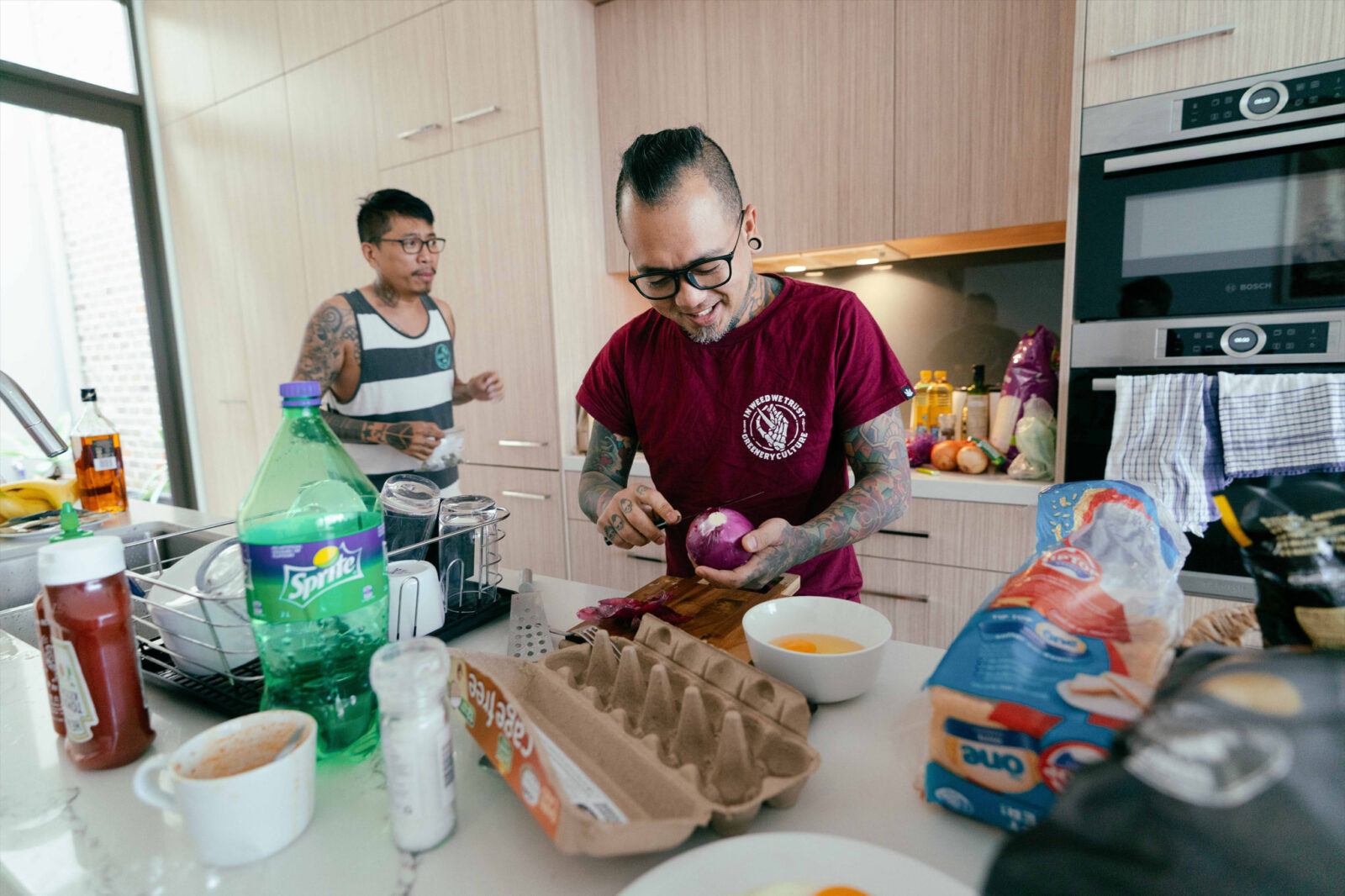
Puto Astete and Jay Contreras of Kamikazee in Sydney photographed by Niña Sandejas
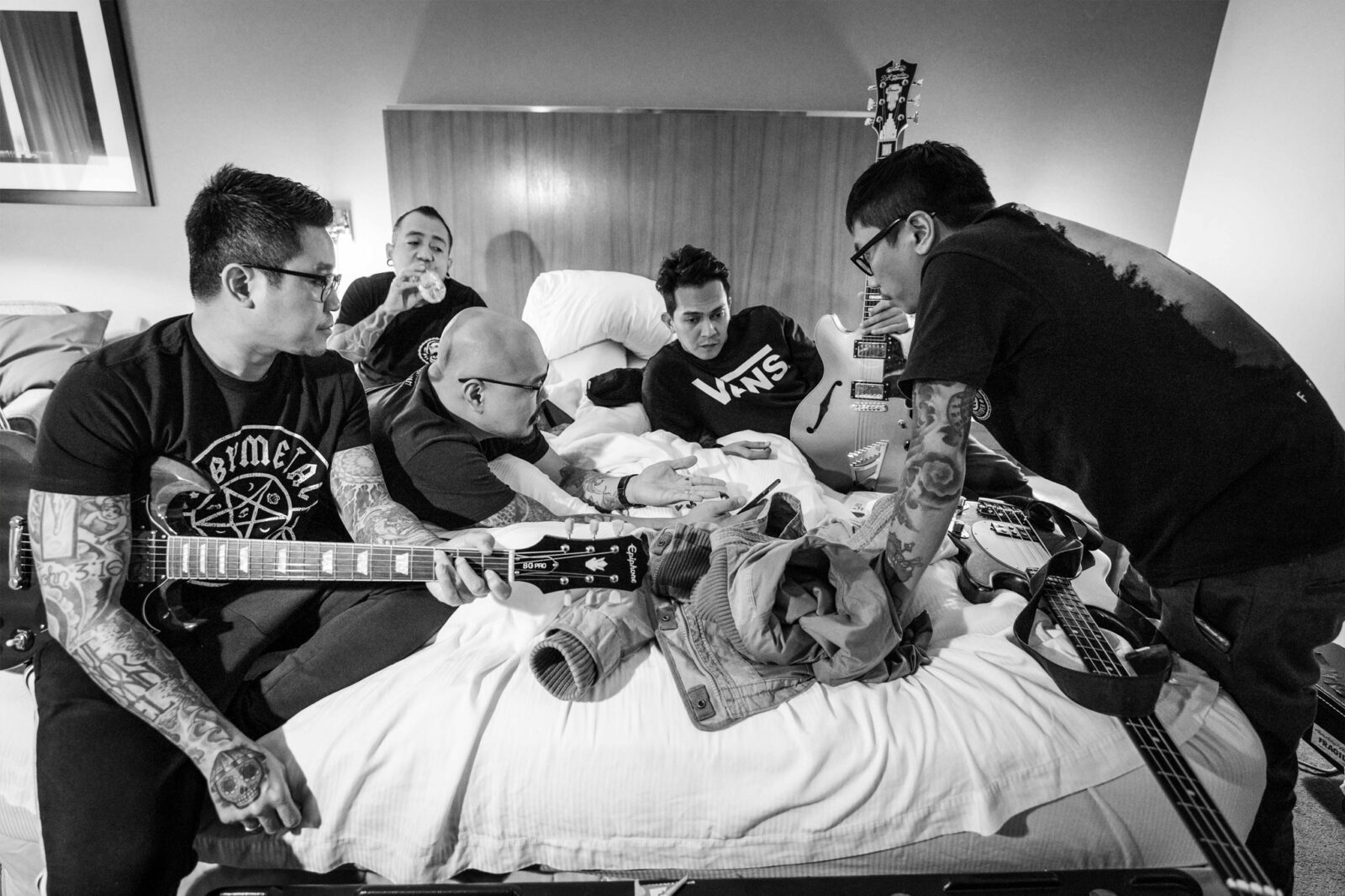
Kamikazee in Washington DC photographed by Niña Sandejas
The industry has improved greatly. I don’t experience this now in production — I don’t know if I’m just old (laughs), but it was pretty awful in the 2000s when catcalling was not yet criminalized, and media and music in general hypersexualized women, and made it a norm for everyone to think they could just touch women without consent. I think we’ve come a long way. If there is anything like that happening still, it’s probably not just a photography issue, but that misogyny is still rampant in certain pockets of society.
How has being a music photographer for two decades impacted you positively as a person that other people might be surprised to learn?
It’s not an easy task to choose an artist, a band, or a scene to follow and be able to complete all the possible perspectives that you need. Sometimes in shoots that I personally think are important, I get a bit aggressive when it comes to getting the shot because I keep thinking that it’s the last time I’ll ever be able to do it.
This is probably why I’m so drawn to these high intensity events in metal and hip-hop. I might not have the time to shoot it again, no repeats, which is basically the essence of music photography — if you miss a moment, it’s gone, and the older you get, you have less time to go out.
So when missing a shot, you miss a peak, you miss an opportunity, and that sort of became the idea that I live by — to try and prepare for all possible outcomes. Some could say that it’s not very positive, but knowing where you’re heading next is helpful if something is not working anymore with not just a project, [but] with anything, really.
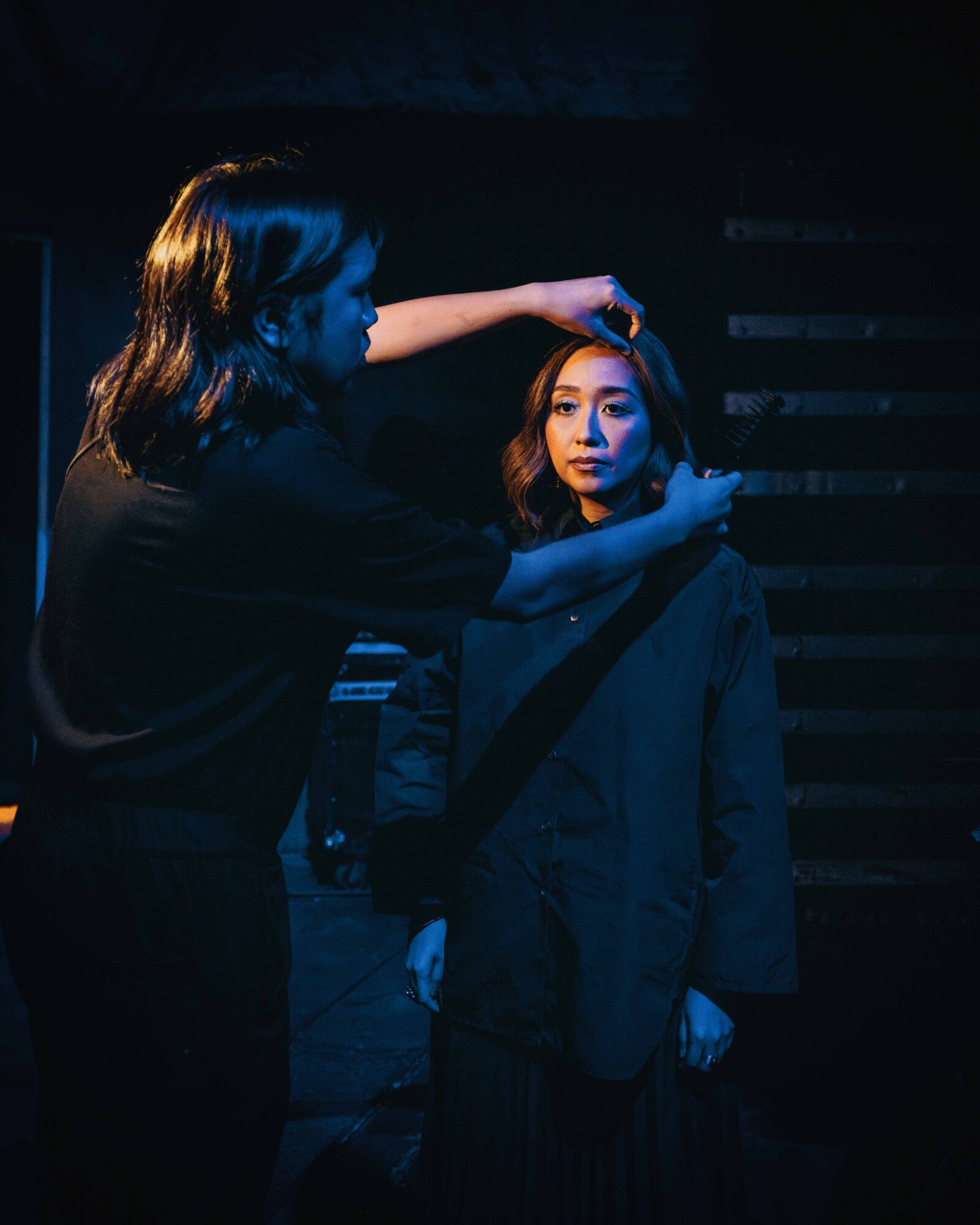
Armi Millare photographed by Niña Sandejas
I often use my intuition when deciding, and some would say it’s not a very reliable basis. But in all my years doing that, I always end up where I need to be. So it can be pretty helpful to just be aware of possible options, so your instincts have purpose. You just choose when and where you are most drawn to and use that information in deciding your direction in life, or just simply, your position in the pit or on stage.
It’s all about expansion of personal experiences now more than helping the ‘culture’ because I used to preach this a lot — helping others. It can be emotionally rewarding, but the whole ‘for the culture’ [mindset] really ends up being pretty one-sided most of the time — with you constantly giving without explicitly stating what you need in return — and it can create an imbalance.
So now I approach every encounter as an opportunity to learn new emotions. Different artists give you different perspectives and you learn from them. You understand more when you witness the birth of a song in the studio, or the moment right before they shift their energies so they can be stage-ready.
What advice would you give to aspiring music photographers, or if you had the chance to talk to your younger self, what would you tell her?
This industry will repeatedly break your heart, but the music will always put it back together.
Follow Niña Sandejas on Facebook and Instagram for more of her work.